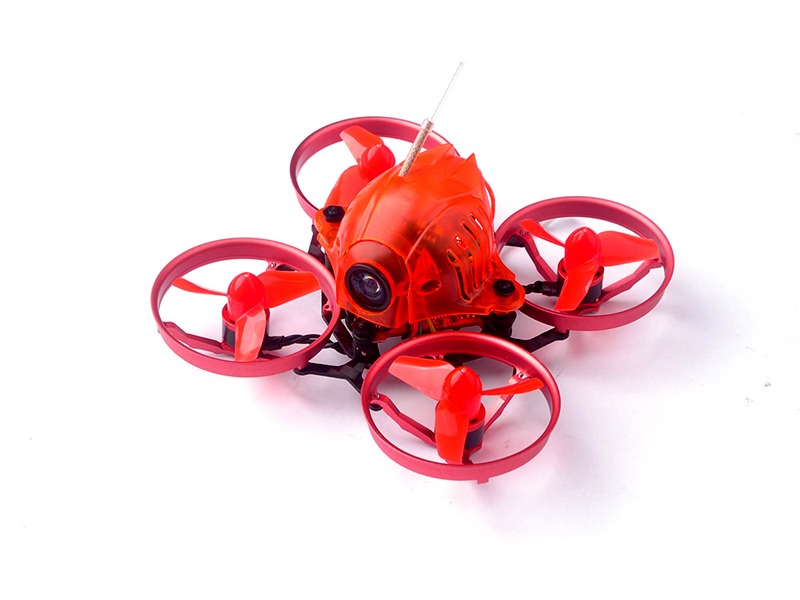Can you fly FPV drone without a spotter?

Yes, you can fly an FPV drone without a spotter. However, there are some important safety considerations and precautions to take before doing so.
First and foremost, it is important to understand the laws and regulations pertaining to drone flight in your area. In the United States, the Federal Aviation Administration (FAA) requires all drone operators to register their aircraft with the agency. Additionally, you must also abide by all local, state, and federal laws when flying your drone.
Second, it is important to be aware of the risk associated with flying an FPV drone without a spotter. Because the drone is being operated remotely, the pilot cannot see what is happening around the drone. This means that the drone is vulnerable to colliding with other aircraft, people, and objects. Additionally, the pilot is not able to see any potential hazards that may be in the way of the drone, such as power lines, trees, or other objects.
Third, it is important to understand the limitations of FPV technology. FPV technology is limited in its range and can only be used to fly within a certain distance from the pilot. Therefore, it is important to be aware of the range of your drone and ensure that you are not flying beyond it. Additionally, the quality of the video feed will be affected by the distance and the environment, so it is important to be aware of these factors as well.
Fourth, it is important to ensure that the drone is adequately equipped with safety features. This includes GPS and other tracking systems, obstacle avoidance systems, and other features designed to ensure the safety of the drone and the pilot. Additionally, it is important to ensure that the drone is properly maintained and that all of its systems are functioning properly.
Finally, it is important to be aware of the risks associated with drone flight. This includes the potential for injury or damage to persons or property, as well as the potential for the drone to be lost or stolen. Additionally, it is important to be aware of the potential for the drone to be hacked or otherwise interfered with.
In conclusion, it is possible to fly an FPV drone without a spotter. However, it is important to understand the laws and regulations pertaining to drone flight, the risks associated with drone flight, and the limitations of FPV technology. Additionally, it is important to ensure that the drone is adequately equipped with safety features and that it is properly maintained. Finally, it is important to be aware of the potential risks associated with drone flight.
Comments / Question
2. Knowledge of the local airspace: Knowing the local airspace is essential for flying a FPV drone without a spotter. This includes understanding any regulations or restrictions that may be in place, such as no-fly zones, altitude limits, and other safety measures.
3. Good situational awareness: Flying a FPV drone requires the pilot to be aware of their surroundings at all times. This means being aware of other aircraft in the area, obstacles, and any potential hazards.
4. Ability to multitask: Flying a FPV drone without a spotter requires the pilot to be able to multitask. This means being able to control the drone, monitor the camera feed, and make adjustments to the drone’s settings all at the same time.
5. Good communication skills: Flying a FPV drone without a spotter requires good communication skills. This includes being able to communicate with other pilots in the area, as well as being able to effectively communicate any changes or adjustments to the drone’s settings.
2. Assistance: If the pilot loses orientation or loses sight of the drone, the spotter can help to locate it and provide directions.
3. Communication: The spotter can communicate with the pilot to provide advice on how to improve flying techniques or to alert the pilot of any potential hazards.
4. Accountability: Having a spotter can help to ensure that the pilot is following the rules and regulations of the area they are flying in.
2. Collision risk: Without a spotter, the pilot may not be able to see obstacles in the drone’s path, leading to a potential collision.
3. Regulatory violations: Flying a drone without a spotter can lead to violations of local regulations, which can result in fines or other penalties.
4. Property damage: Without a spotter, the pilot may not be able to see obstacles in the drone’s path, leading to potential property damage.
5. Injury risk: Without a spotter, the pilot may not be able to see people or animals in the drone’s path, leading to potential injury.
2. Follow local laws and regulations for drone flying.
3. Avoid flying in restricted areas such as airports, military bases, and other sensitive areas.
4. Avoid flying in bad weather conditions such as strong winds or rain.
5. Make sure the drone is always in view, either directly or through the use of a first-person view system.
6. Keep the drone away from power lines and other obstacles.
7. Have a pre-flight checklist to ensure that the drone is in good condition.
8. Make sure the battery is fully charged and the propellers are properly secured.
9. Make sure the drone is properly calibrated before each flight.
10. Make sure you are aware of other aircraft in the area.
11. Avoid flying at night or in low light conditions.

